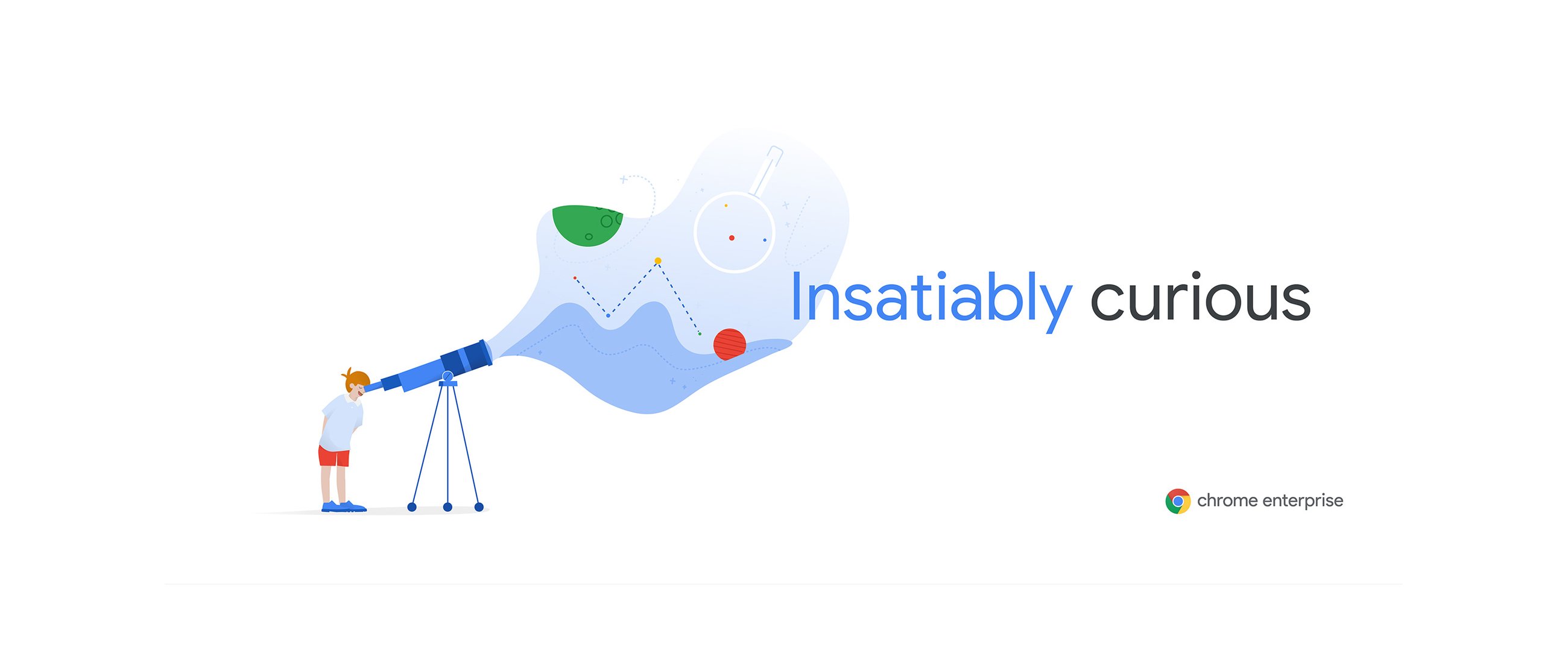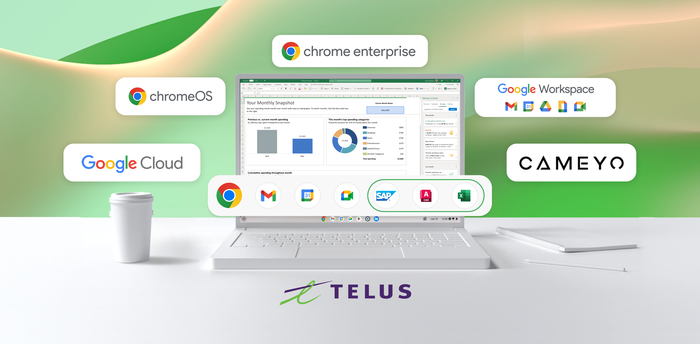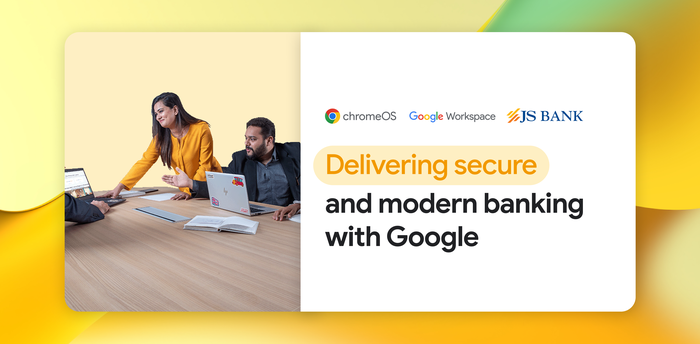The future of computing showed up early

John Solomon
Vice President and General Manager, Chrome OS
Editor’s note: Today’s post is by John Solomon, VP of Chrome OS. Now more than ever, workers rely on technology to stay connected. If you missed John’s discussion with Alex Konrad, listen to the Forbes discussion here, or join John on the premiere episode of Tea Time Tech Talks presented by Chrome Enterprise where John shares his personal journey to the Chrome OS group at Google and his optimistic perspective of the future of computing. [goo.gle/TTTT]
The year 2020 will be remembered by us all as a year of extreme challenge, loss, and perseverance. For me, it’s also one of gratitude as I mark my second year on the Chrome team here at Google. The past 24 months have not only been the richest and most engaging in my career, but they’ve also offered me my steepest learning curve.
During this time, we’ve matured and rapidly grown a new, thoroughly modern computing platform: security from silicon to the cloud, a modern OS, and a breadth of applications to get tasks done. Alongside it, we’ve worked with developers, OEMs, customers, and even our competitors to make computing more open and collaborative, all in a secure, simple and affordable stack.
I’m a person who gravitates toward opportunities where we can challenge the status quo, and I always try to bring to those challenges an optimistic view of what’s possible. As we expanded a truly modern operating system over these past two years, we saw increased demand and confirmed we were onto something for the longer term. The concept of powerful cloud-based computing on speedy and cost-effective tech was increasingly appealing. We were focused on the idea of extending the benefits across all segments, from consumers to students, and increasingly for businesses of all types.
Then everything changed
The COVID-19 pandemic has injected a stochastic shock to the trendlines. The idea of having cloud-based devices that can be accessible anytime and anywhere is no longer a nice-to-have, it will likely become a necessity for many businesses as they adopt a more versatile way of working. What we thought would be five years out is now happening far more quickly.
Evolution of remote working population over time


The remote work revolution
This shouldn’t really be surprising. Behavior changes are non-linear; they happen slowly, until they don’t. COVID-19 has proven to be a tipping point, and what was looking to be a steady evolution is now a revolution. Companies of all sizes have implemented work from home and are running nearly all functions, including mission critical ones, remotely. Like many of you, I’m writing this from home, I’m not in the office.
Enterprises are accelerating the move of applications and workloads to the cloud, adding resiliency to the existing benefits of flexibility, agility collaboration and cost. In healthcare, for example, telemedicine—a 20+ year-old technology that has largely been niche—has moved rapidly to be mainstream. And digital transformation is accelerating across the board. Departments of education globally are implementing one-to-one student to device ratios, enabling remote learning as part of the fabric of the digital transformation of education.
Of course the economic environment will mean organizations will be taking a closer look at their capital expenditures, but keeping employees productive remains a top priority for businesses, they will just need to do it more affordably. The features and benefits of Chrome OS that we used to think were additive suddenly became mandatory and business-critical. Case in point, we have seen a 109% year over year growth in unit sales in the U.S. for Chromebooks, and ~155% year over year growth in commercial Chromebooks in Q1 2020, fueled in part by the cost benefits and simplicity of deploying Chromebooks.
Now that consumers, education authorities, and businesses have experienced this new reality, the agility around location that has come with it is likely to persist long term. After being forced to work differently, we are seeing that it’s not only doable, in many cases, we are seeing that it’s preferable.
A redefined workplace
Google is developing more flexibility in how we approach work. And many other organizations are entering a workplace that’s even “beyond place”—a more fluid construct of where and how work gets done. I believe that’s a really positive outcome for how people work, and one that’s probably long overdue.
At Google, we recognize the modern way of working as being a cloud worker—on a browser and browser-based apps for the vast majority of the work day (you’re reading this in one, right?), untethered because the devices you use are mobile-friendly and cloud-native. We’ve long been saying that almost any business role can be a cloud worker, and COVID-19 has dramatically made this point. As a result, the Chrome OS team is working on new ways to make sure every company can benefit from the velocity created by supporting a cloud workforce. For example, our new partnership with Parallels brings legacy application support—which includes Microsoft Office desktop apps—to Chromebooks. More to come on this over the coming months.
COVID-19 is completely changing business continuity planning, and mission critical remote work has moved from a dusty paragraph at the back of audit compliance manuals to the front page for every enterprise worldwide. Remote work has not just been re-prioritized, but it’s been redefined right alongside leadership succession planning and system crash contingency planning to include provisioning for remote working environments.
And then there’s...all of us. I feel so much optimism witnessing the human side of this inflection point. Every day I’m inspired by the ways we’re adapting and thriving. Working from home—whatever your situation—has its own pressures and downsides. However, we’re certainly also spending a lot less time commuting and traveling for business. In many cases that means more time with the people we love, and that has to be a good thing we’ll want to keep around. In addition, the reduced commute and travel is beneficial for the environment and traffic congestion.
The moment for IT to lead
Sudden change does a great job of forcing perspective. Our lives can become fundamentally different overnight, and we can find equally different ways to work and live. The right technology removes the barriers. And it’s up to IT to put transformative, modern fit for purpose technology it in the hands of cloud workers, students, all who would benefit. The role of leadership has never been more important for influencing how we all seize the opportunity, adapt, and thrive in this new (and still changing) normal.
In case you missed it, I invite you to watch the discussion with Alex Konrad at Forbes and Hackensack Meridian Health to discuss changes to end under computing. I’m also sharing my story with you on the premiere episode of Chrome Enterprise “Tea Time Tech Talks,” a series of quick tips and tricks from our customers and IT heroes.



